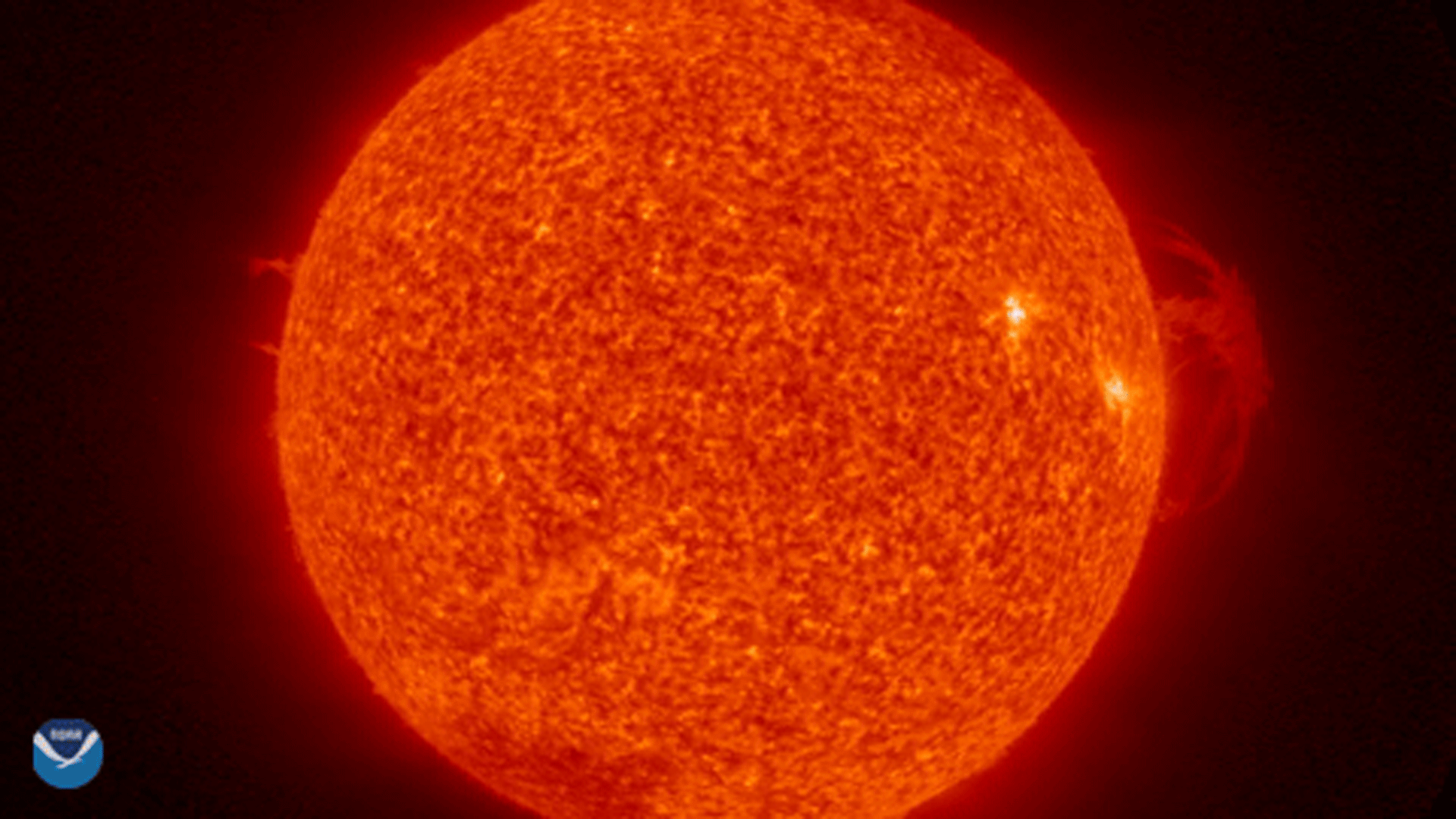
NOAA’s GOES West saw a solar prominence , a type of eruption, take place on the Sun’s surface on March 30-31, 2021. This event was captured by the satellite’s Solar Ultraviolet Imager (SUVI) instrument, a telescope which collects imagery of the Sun in six different wavelengths. By observing these different wavelengths, SUVI can give us a more complete picture of the Sun’s atmosphere. This particular Image of the Day shows the 304 angstrom wavelength, which observes plasma , or ionized gas, in the Sun's atmosphere at about 90,000 degrees Fahrenheit.
This event was not directed toward Earth. But when events like this travel toward Earth, the Space Weather Prediction Center uses SUVI and other data to produce space weather forecasts to predict the impact they can have. More disruptive events are far more likely to occur near solar activity maximums than during minimums. The most recent minimum occurred in December 2019 , with the maximum expected around 2025.
An eruptive prominence can become a coronal mass ejection, or an outflow from the surface of the Sun, and have potentially devastating impacts on the Earth itself. The magnetic field around the Sun is large enough to encapsulate space far past the edge of the planets and helps protect the planets within it from harmful cosmic particles, similar to how the Earth’s magnetic field protects it from much of the Sun’s radiation.
There is a great deal of discussion about the effects of a major event in the solar observations community, such as the Carrington Event in 1859 , and its potential trillion-dollar impact on Earth’s current electrical infrastructure. However, more information is needed to fully understand and prepare against such worst-case scenarios. For more information on how space weather such as the Sun’s activity can affect the earth.
The GOES West satellite, also known as GOES-17, provides geostationary satellite coverage of the Western Hemisphere, including the United States, the Pacific Ocean, Alaska and Hawaii. First launched in March 2018, the satellite became fully operational in February 2019. The SUVI is a telescope onboard the GOES-R satellites that monitors the sun within the extreme ultraviolet (EUV) wavelength range in six wavelengths. Collectively, they characterize the structure of solar active regions, solar prominences and filaments and the boundaries of coronal holes.
